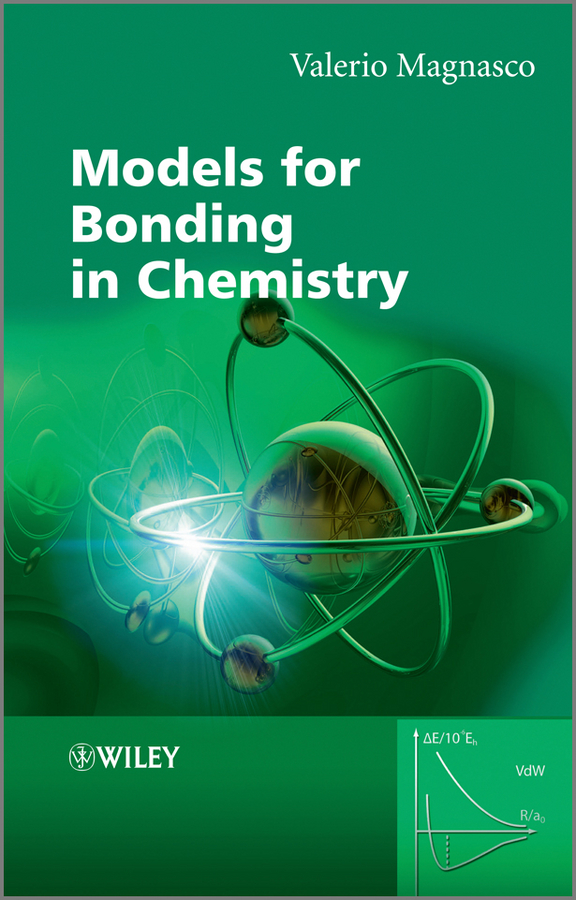Электронная книга: Valerio Magnasco «Models for Bonding in Chemistry»

|
A readable little book assisting the student in understanding, in a nonmathematical way, the essentials of the different bonds occurring in chemistry. Starting with a short, self-contained,introduction, Chapter 1 presents the essential elements of the variation approach to either total or second-order molecular energies, the system of atomic units (au) necessary to simplify all mathematical expressions, and an introductory description of the electron distribution in molecules. Using mostly 2x2 Hückel secular equations, Chapter 2, by far the largest part of the book because of the many implications of the chemical bond, introduces a model of bonding in homonuclear and heteronuclear diatomics, multiple and delocalized bonds in hydrocarbons, and the stereochemistry of chemical bonds in polyatomic molecules, in a word, a model of the strong first-order interactions originating the chemical bond. In Chapter 3 the Hückel model of the linear polyene chain is used to explain the origin of band structure in the 1-dimensional crystal. Chapter 4 deals with a simple two-state model of weak interactions, introducing the reader to understand second-order electric properties of molecules and VdW bonding between closed shells. Lastly, Chapter 5 studies the structure of H-bonded dimers and the nature of the hydrogen bond, which has a strength intermediate between a VdW bond and a weak chemical bond. Besides a qualitative MO approach based on HOMO-LUMO charge transfer from an electron donor to an electron acceptor molecule, a quantitative electrostatic approach is presented yielding an electrostatic model working even at its simplest pictorial level. A list of alphabetically ordered references, author and subject indices complete the book. Издательство: "John Wiley&Sons Limited"
ISBN: 9780470669754 электронная книга Купить за 12741.47 руб и скачать на Litres |
Другие книги автора:
| Книга | Описание | Год | Цена | Тип книги |
|---|---|---|---|---|
| Models for Bonding in Chemistry | A readable little book assisting the student in understanding, in a nonmathematical way, the essentials of the different bonds occurring in chemistry. Starting with a short… — John Wiley&Sons Limited, электронная книга Подробнее... | электронная книга | ||
| Methods of Molecular Quantum Mechanics. An Introduction to Electronic Molecular Structure | This advanced text introduces to the advanced undergraduate and graduate student the mathematical foundations of the methods needed to carry out practical applications in electronic molecular quantum… — John Wiley&Sons Limited, электронная книга Подробнее... | электронная книга |
См. также в других словарях:
chemistry — /kem euh stree/, n., pl. chemistries. 1. the science that deals with the composition and properties of substances and various elementary forms of matter. Cf. element (def. 2). 2. chemical properties, reactions, phenomena, etc.: the chemistry of… … Universalium
chemical bonding — ▪ chemistry Introduction any of the interactions that account for the association of atoms into molecules, ions, crystals, and other stable species that make up the familiar substances of the everyday world. When atoms approach one another … Universalium
Inorganic chemistry — For the journal, see Inorganic Chemistry (journal). Inorganic compounds show rich variety: A: Diborane features unusual bonding B: Caesium chloride has an archetypal crystal structure C: Fp2 is an organometallic complex D … Wikipedia
CHEMISTRY — Since the birth of modern chemistry at the beginning of the 19th century, Jews have taken a full part in all branches of the science, and the percentage of Jews achieving eminence has been high compared to their number in the general population,… … Encyclopedia of Judaism
Chemical bonding model — Chemical bonding models are theoretical models used to explain atomic bonding structure, molecular geometry, properties, and reactivity of physical matter.[1][2][3][4] Contents 1 Ove … Wikipedia
Cluster chemistry — In chemistry, a cluster is an ensemble of bound atoms intermediate in size between a molecule and a bulk solid. Clusters exist of diverse stoichiometries and nuclearities. For example, carbon and boron atoms form fullerene and borane clusters,… … Wikipedia
